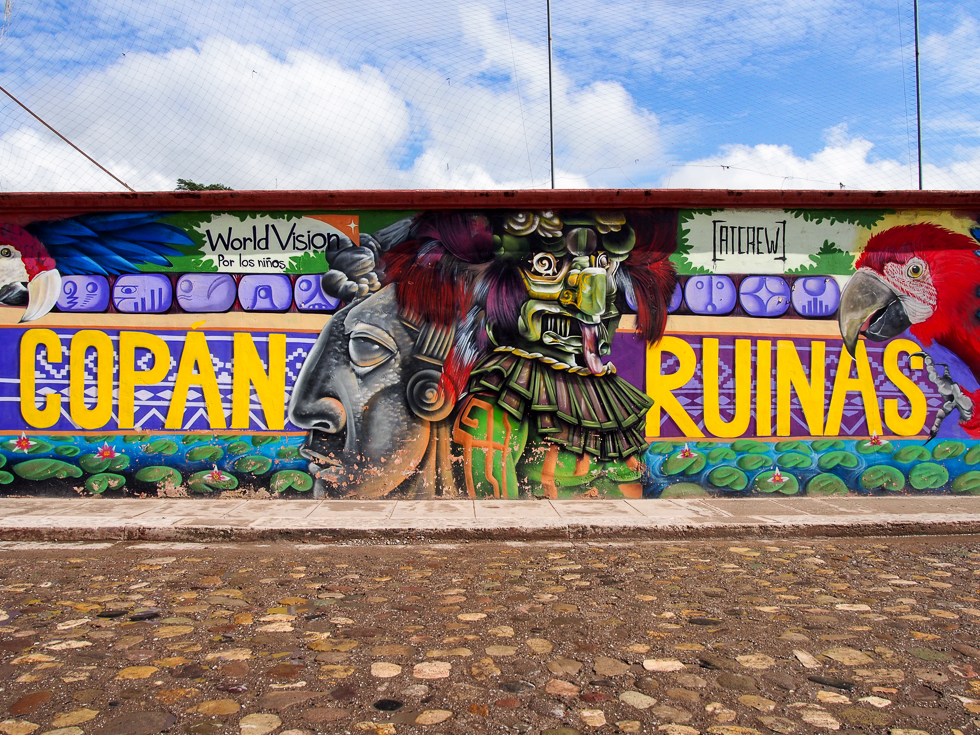
When planning my travels in Honduras, I knew that I wanted to make a stop at the famous Mayan ruins of Copán. Little did I know, the nearby town of Copán Ruinas, mere steps away from the ruins, is also an incredible destination in and of itself, particularly for sustainable travel. The town is adorably quaint, with a rich Mayan history, a phenomenally beautiful surrounding landscape, and a plethora of conservation initiatives and ecotourism activities that visitors can partake in. Read on for everything you need to know about sustainable and responsible travel in Copán Ruinas, Honduras, including ecotourism and cultural heritage activities to do, local foods to try (and some great local restaurants), locally-owned accommodation, and more, so tourists can help support local enterprises, culture, and the environment. Copán Ruinas is a fantastic destination – I loved it and I hope you will too!
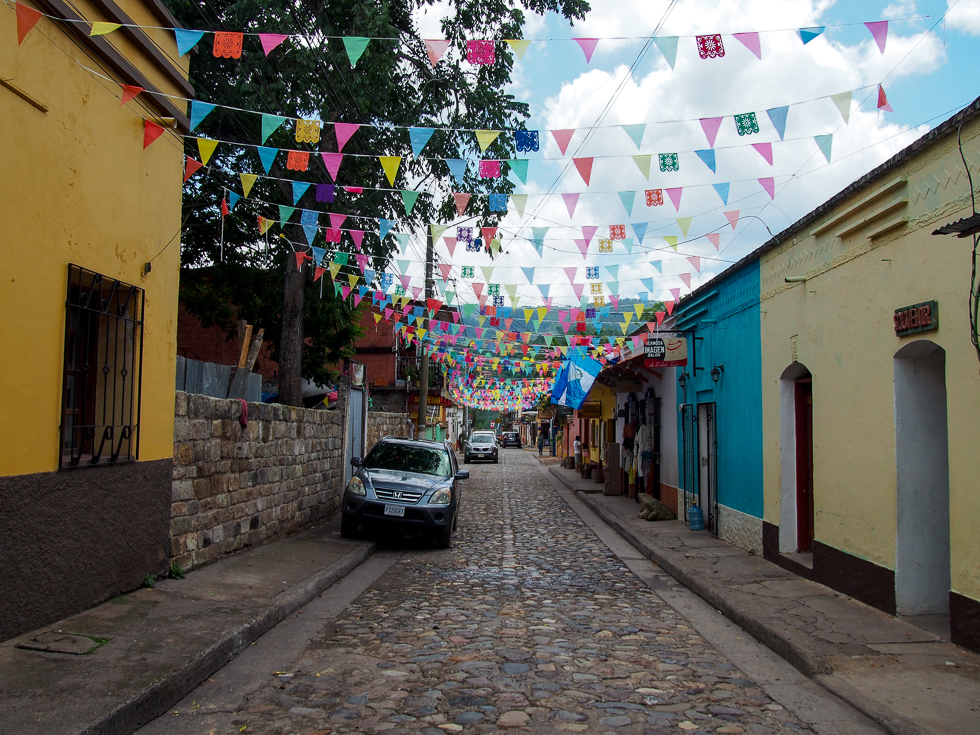
Note: this post may contain affiliate links. If you make a purchase through one of these links, I will earn a commission at no extra cost to you.
Visit Mayan ruins in Copán Ruinas’ Archeological Park
The Mayan ruins of Copán are the region’s main attraction, and for good reason. The ruins are a UNESCO World Hertiage Site, and visiting them pays homage to the important Mayan history of the region. For a brief history recap, the civilization of Copán actually dates back thousands of years, though it rose to prominence when Mayan leader K’inich Yax K’uk’ Mo’ arrived in the area around 427 A.D. and began a dynasty that lasted many centuries. Copán was a powerful force in the Mayan world during this time, associated with major significant cultural and scientific developments. The ruins are particularly famous for their intricate carvings and hieroglyphics.
I found visiting the ruins to be an incredibly moving and powerful experience, and it was a major highlight during my time in Honduras. I cannot recommend them enough, though I will firmly encourage tourists to be considerate when visiting the site. Please obey all signage and avoid prohibited areas; the ruins are currently being restored, and while visitors can walk or climb in certain parts of the compound, wandering in off-limits areas can degrade or even destroy the ruins. Remember that in visiting the ruins at Copán, you are treading on sacred ground; visit, photograph, and interact with the space respectfully.
The ruins are open daily from 8:00 a.m. to 6:00 p.m. Entrance costs 15 USD for foreign visitors (80 lempiras for Honduran visitors). This entry fee includes entrance to the nearby Sculpture Museum, but does not include entrance to the onsite tunnels, which cost another 15 USD to visit.
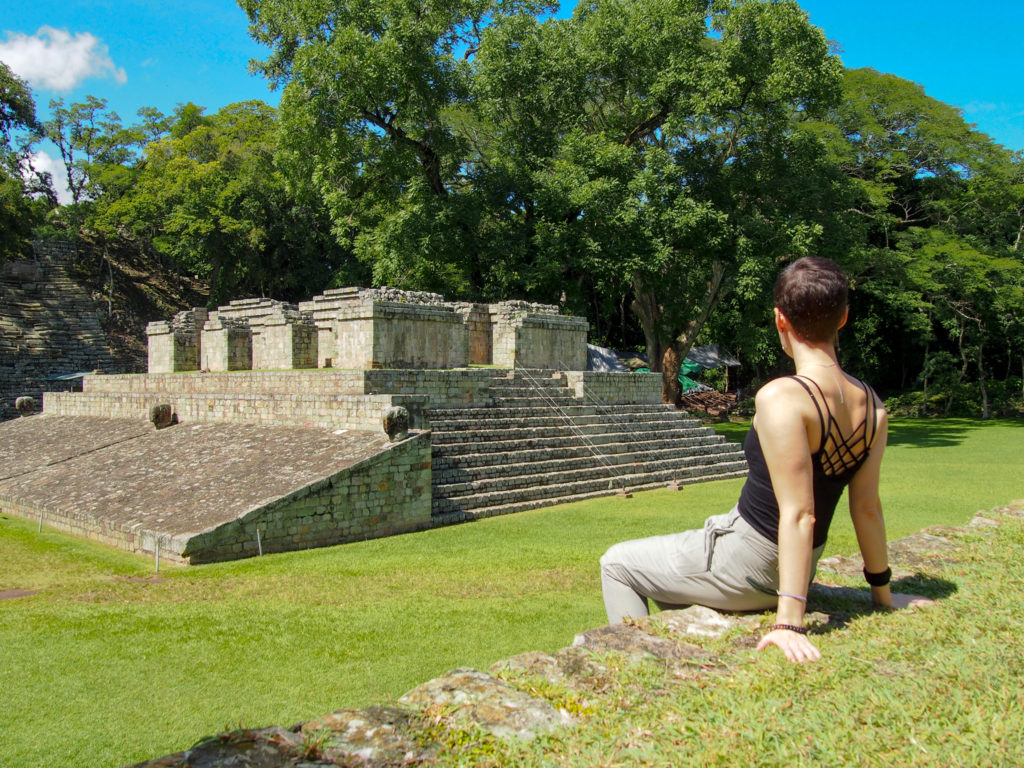
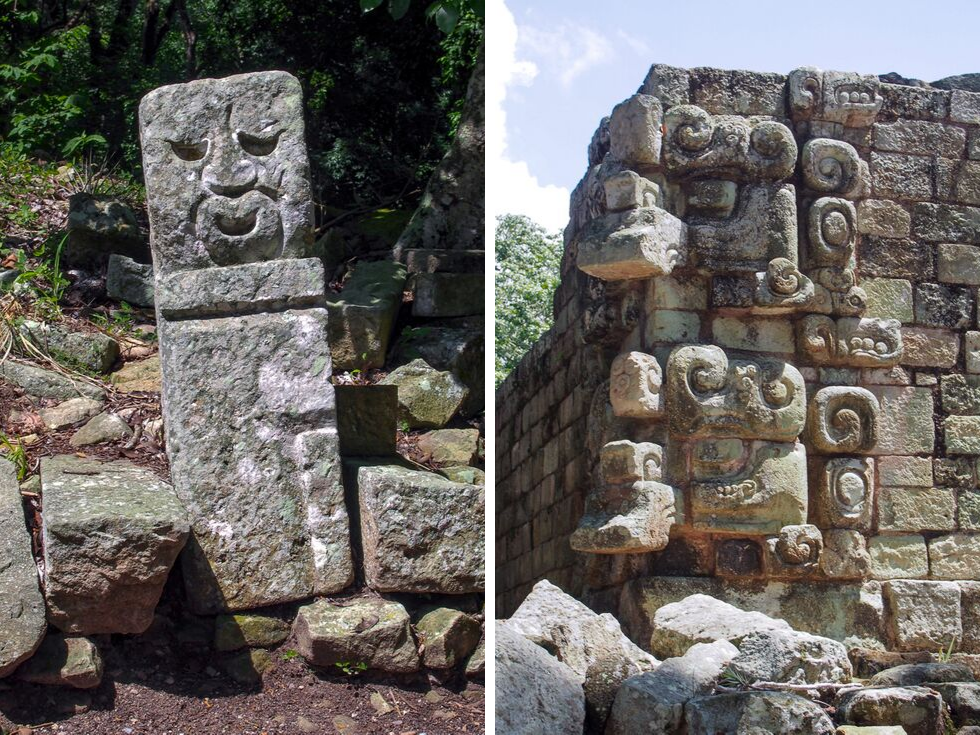
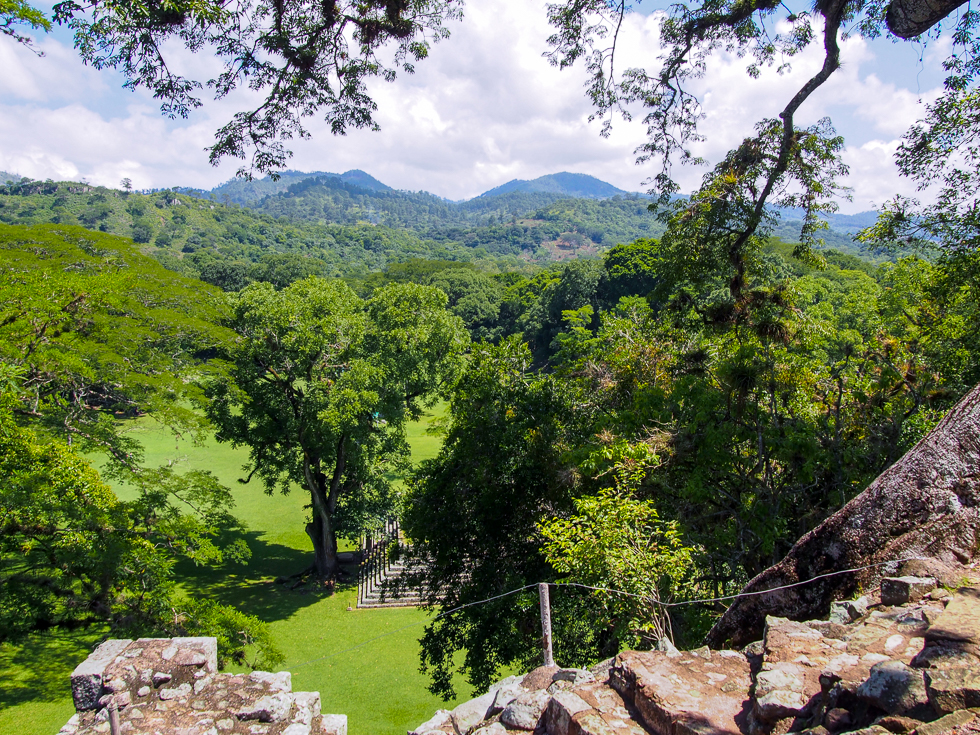
Peruse the city’s museums for your history fix
There are a number of museums around Copán Ruinas, the perfect way to better understand the history of Copán and the surrounding area. Spending time in the museums is also a great way to pass a rainy afternoon, if you happen to be in Copán during the rainy season.
The Mayan Archaeological Museum of Copán: This small museum provides information on the Mayan history of Copán. It is located next to the parque central (central park) and is open from 2:00 p.m. to 9:00 p.m. daily. Entrance costs 3 USD for foreigners and 20 lempiras for Hondurans.
The Digital Museum of Copán: The digital museum offers visitors a 3-d view of Copán, and other cities in the region. I didn’t make it to this museum but it seems interesting. It is located just north of the parque central and is open daily from 1:00 p.m. to 9:00 p.m. Entrance costs 3 USD for foreigners and 20 lempiras for Hondurans.
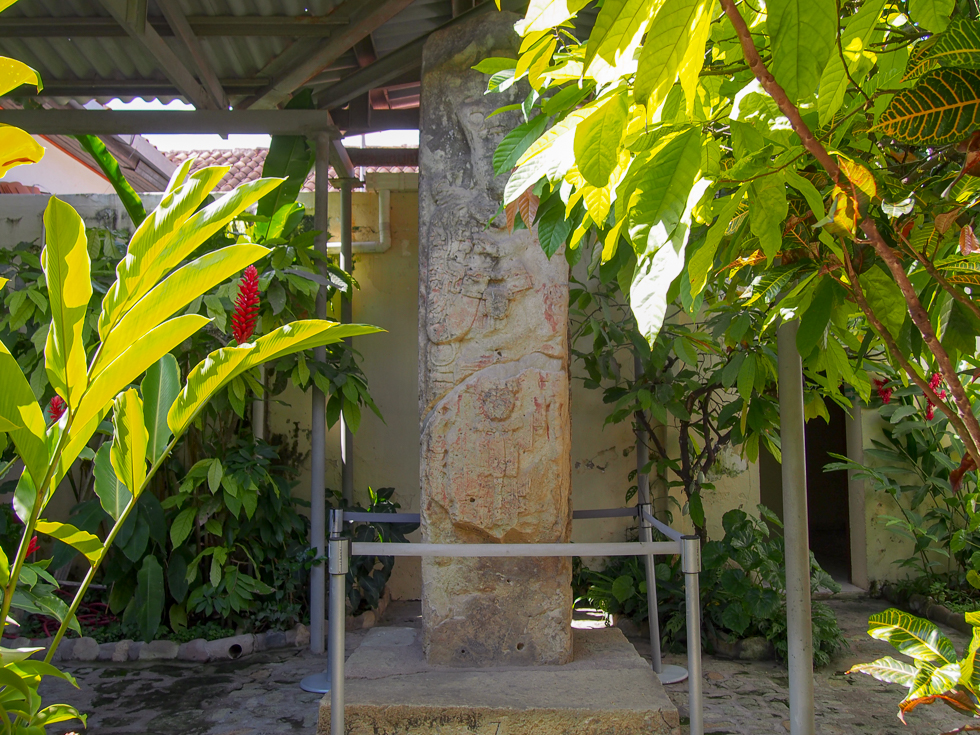
Speak local: brush up on your Spanish in Copán Ruinas
Spanish is the official language in Honduras, and knowing even a little Spanish will help travelers better connect with the town and the local culture (plus, learning a little bit of the local language is an important part of being a responsible traveler!). Honduran Spanish should sound generally clear to non-native speakers, and I would argue that it’s more formal than Spanish from many other countries (even neighboring Guatemala and Nicaragua). Virtually everyone addresses one another using the ‘usted’ form (even parents speaking to their infant children, for example), so I would advise travelers to reciprocate this respect and use the usted form when speaking with copanecos (i.e. people from Copán) around town.
Honduras also has plenty of its own regionalisms and slang, so here are a few words to get you started: catracho/catracha means hondureño/hondureña and is the nickname for a person from Honduras (ex. ¿usted es catracho?). Macizo/maciza is Honduran slang for cool (ex. ¡qué macizo!), as is macanudo.
For travelers looking to take some language classes while in Copán Ruinas, there are three Spanish schools to choose from: Copán Spanish School, Guacamaya Spanish School, and Ixbalanque Spanish School.
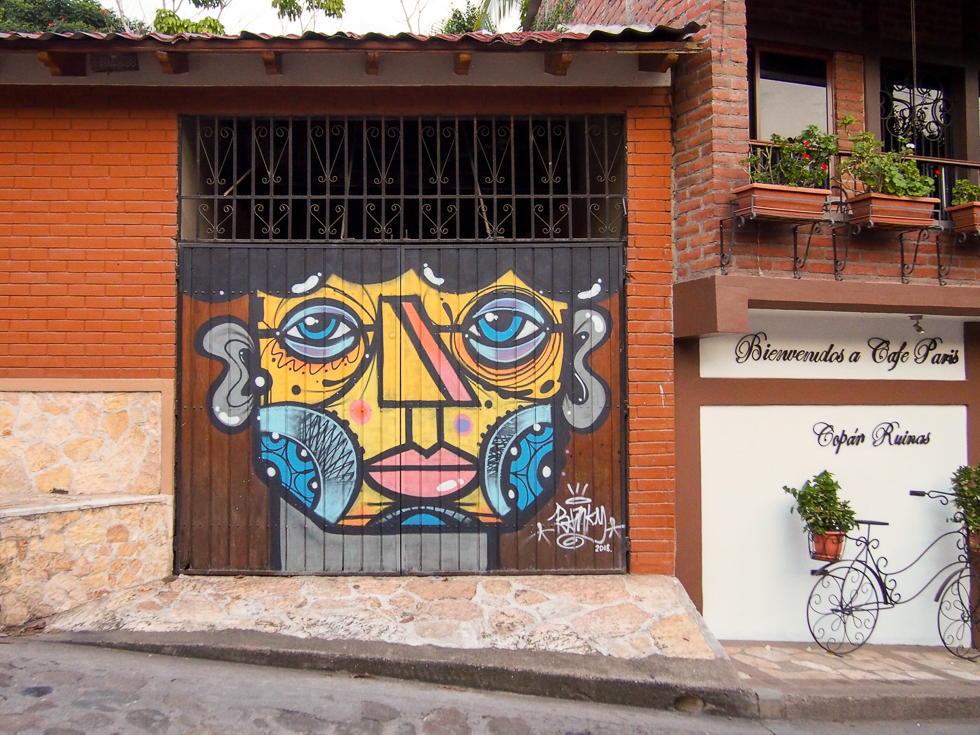
Engage with conservation at Macaw Mountain: Bird Park and Nature Reserve
Macaw Mountain is a nature reserve dedicated to the rescue, rehabilitation, and re-release of native bird species into the wild. The project initially began in Roatán (one of Honduras’s Bay Islands) to rehabilitate previously captive parrots and macaws. However, it has grown substantially in recent years, with a large focus on conservation education, outreach, and notably on the re-release of the macaws back to the wild. The release of the birds back to the Copán Valley is particularly important, as these birds have historically flown freely throughout the valley and around the ruins. Their reintegration into the ecosystem of the valley is a tribute to the coexistence between the Mayans and the birds, contributing to the cultural patrimony of the region while also conserving important wildlife.
Visitor’s can wander through the tranquil reserve, beneath a canopy of trees and surrounded by local flora, while learning about the many bird species at the park. Macaw Mountain is open seven days a week from 8:00 a.m. to 4:00 p.m. Admission costs 240 lempiras (10 USD) for non-Hondurans (120 lempiras/5 USD for Hondurans). The park is located about 2 kilometers north of the city, a short tuk-tuk ride from the city center.
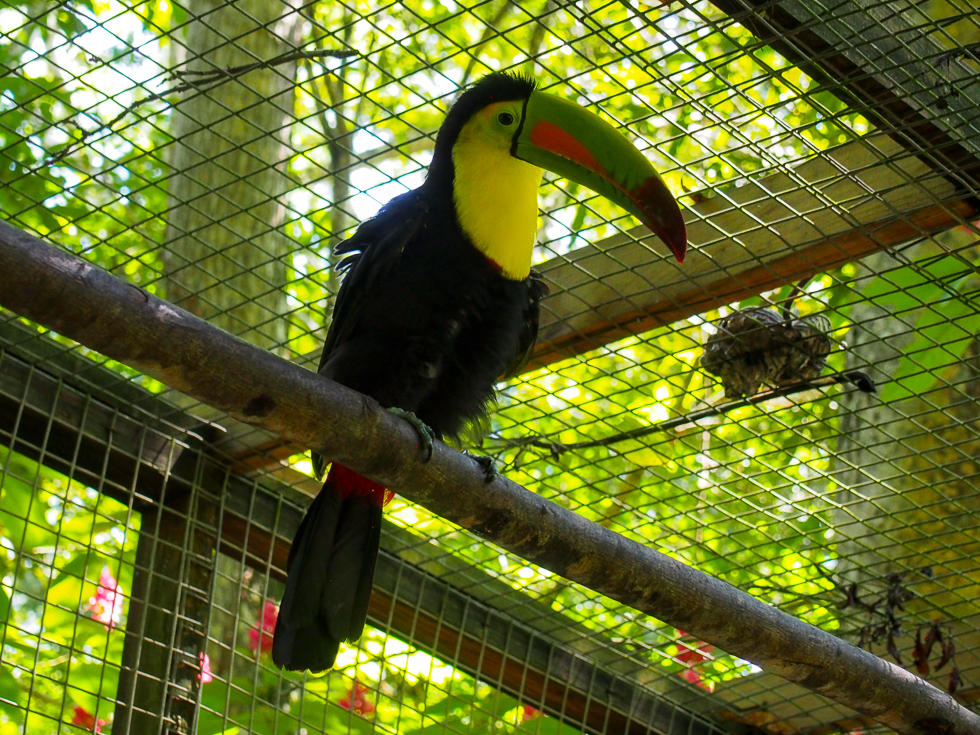
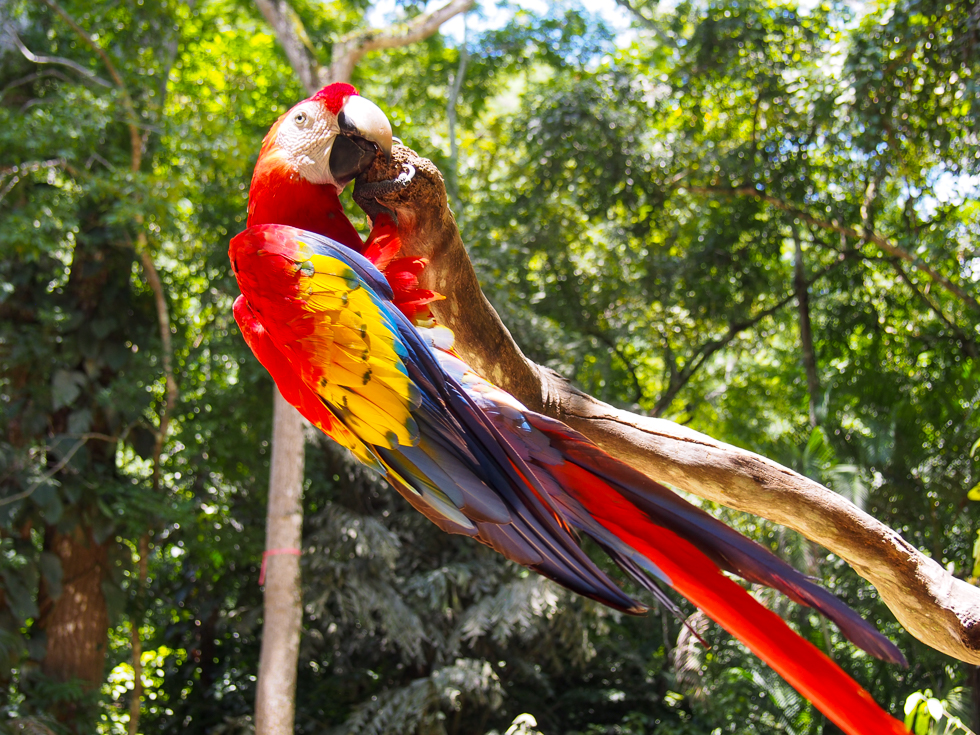
Drink tea and learn about reforestation in El Lugar del Té & Chocolate
Don’t miss El Lugar del Té & Chocolate (The Tea and Chocolate Place), an amazing place to sip tea or hot chocolate, take in the views of the hills around Copán, and learn all about reforestation and ecosystem restoration in the area.
El Lugar del Té & Chocolate is a small, family-run operation that started as a project called the Copán 2012 Botanical Research Station, located near the Copán Archeological Park. At this site, archaeologist David Sedat and his family successfully restored a steeped area of approximately 20 hectares of land through the use of earth-friendly technologies, such as by reintroducing native trees and plants to the area and creating micro-terraces. Not only did these efforts reforest the formerly degraded land, but they restored biodiversity to the area, enabled various educational initiatives with youth from Copán, and allowed for the cultivation of a number of important plants in the Mayan tradition. From the plants grown onsite, the family has created an extensive line of artisanal products, including teas, chocolates, and a variety of body care products.
Their visitor’s center for this project is located in El Lugar del Té & Chocolate, where from 4:00 p.m. to 6:00 p.m. Monday through Saturday, visitors can browse the products, sample some teas, and enjoy sunset views from the terrace. This is a must-do in Copán, and it’s a great place to pick up some sustainable souvenirs for friends and family back home!
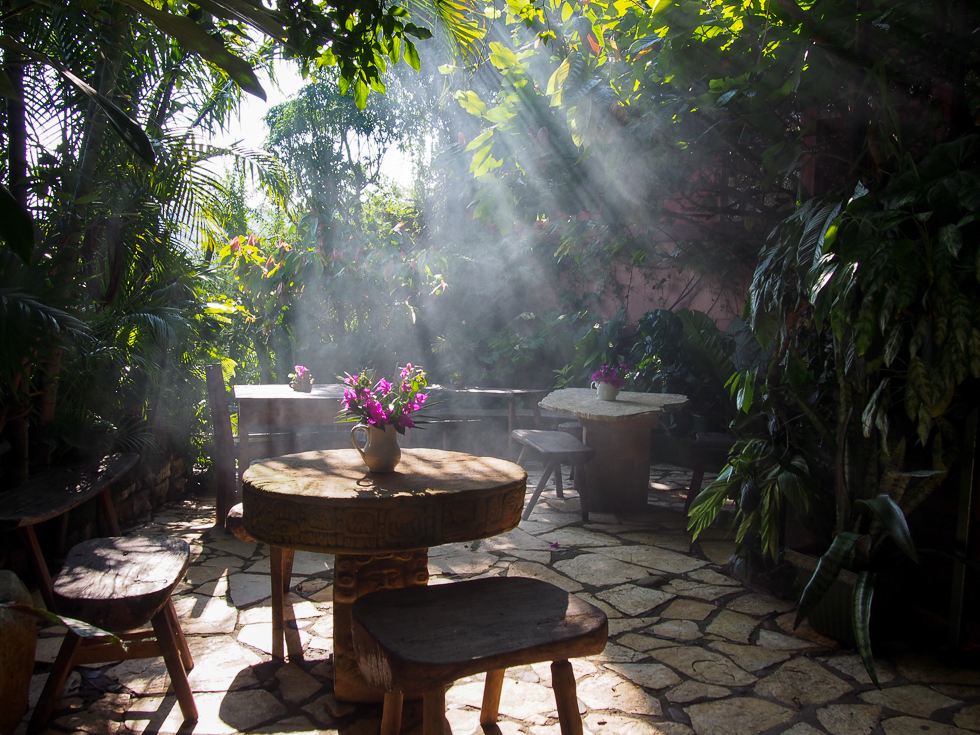
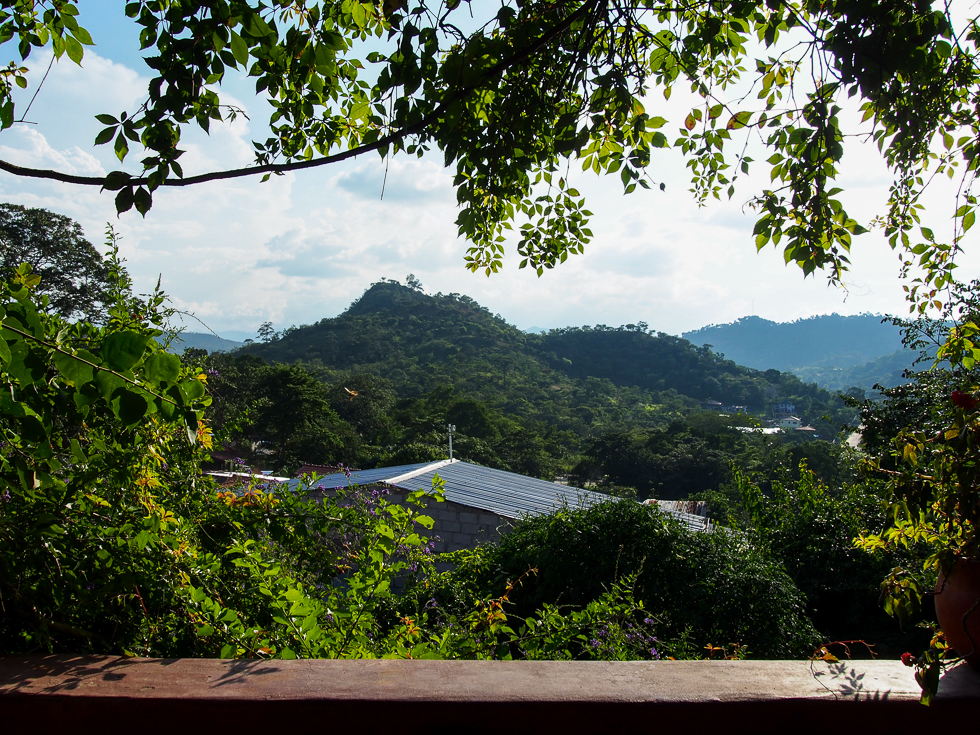
Relax at the Luna Jaguar eco-spa
Looking for some R&R while in Copán? Then don’t miss the Luna Jaguar eco-spa. Located about 45 minutes outside of the town of Copán Ruinas, this outdoor spa features an array of thermal pools with naturally hot water. The spa itself is located in a nature reserve, and it was designed according to principles of Mayan architecture and according to spiritual philosophies of the Mayan tradition. It’s a beautiful place and a wonderful way to pass an afternoon or evening.
There is a daily shuttle from Copán Ruinas to Luna Jaguar, leaving at 2:00 p.m. and returning at 6:30 p.m., for 500 lempiras (about 20 USD), which includes transportation and the entrance fee. You can also visit the spa on your own, though it is advisable to book a shuttle regardless to ensure that you have transportation back to Copán. General entrance is 300 lempiras (about 12 USD). Massages and other spa services are not included in the general admission price.
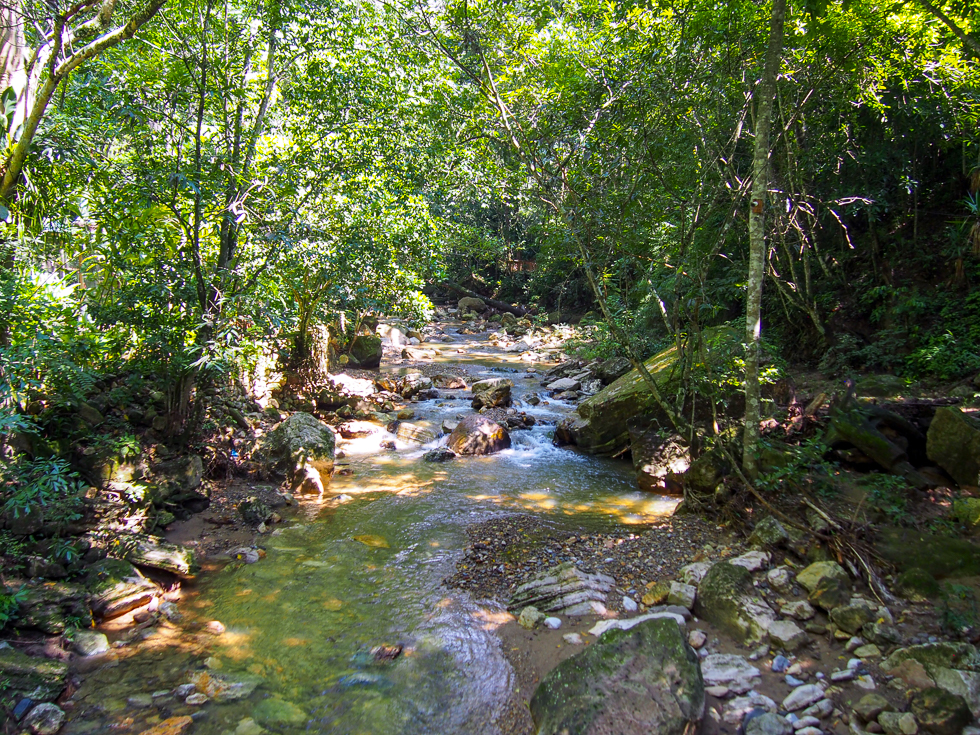
Learn about butterfly conservation at the Mayan Hills Mariposario
Butterfly fans will love the Mayan Hills Mariposario (butterfly house), located right at the edge of the town of Copán Ruinas. The mariposario is attached to a hotel, and for 80 lempiras (about 3 USD), visitors can view a brief demonstration of the life cycle of butterflies, and then wander through the butterfly house, which is literally teeming with life. In the mariposario, over 30 species of butterflies native to Honduras are protected and conserved. It also serves as an educational resource for local students to learn about native wildlife and conservation. It’s a beautiful and serene place, and definitely worth visiting.
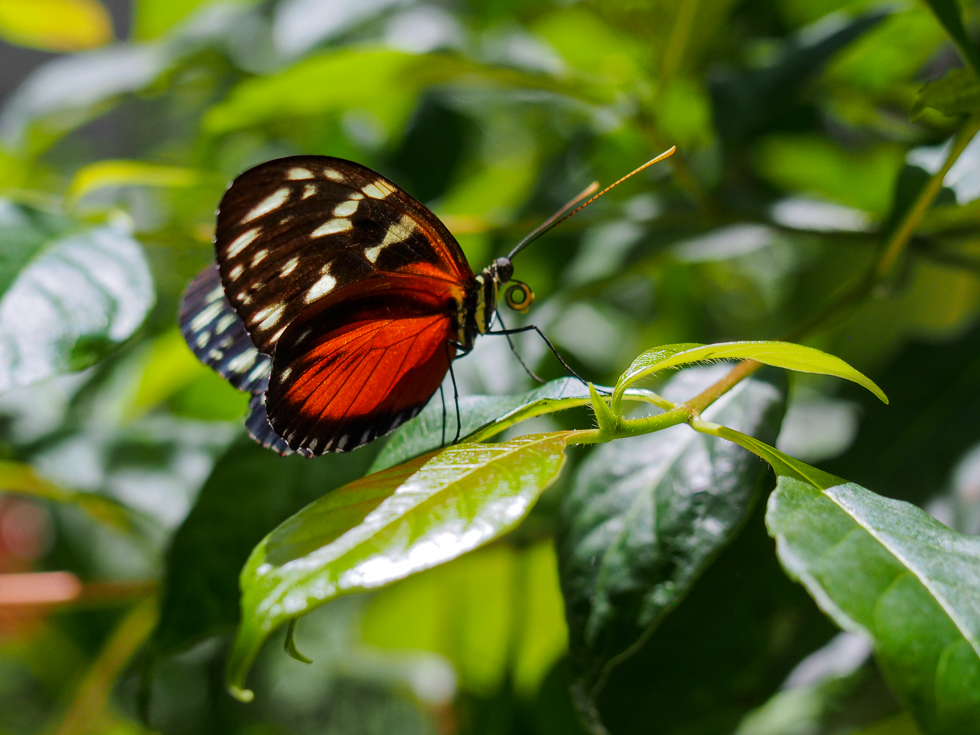

Buy some locally-made, artisanal souvenirs
There are a number of shops around Copán Ruinas that sell beautiful, handmade items – the perfect place to pick up a souvenir for folks back home, or for yourself! Supporting local artisans is a great way to directly contribute to the local economy of the places that we visit, while also investing in that place’s cultural heritage. Plus, handmade souvenirs are eco-friendly, high-quality, and they carry the incalculable value of being made with care by local hands. I definitely recommend going shopping in Copán, and keeping your eyes out (or asking vendors and shopkeepers) to point you in the direction of any handmade items.
For amazing textiles, I recommend checking out Tejidos La Pintada in Copán Ruinas, a shop run by Honduran, female artisans. Visitors can browse handmade bags, ponchos, scarves, and more, while seeing the loom itself where the items are made – right there in the shop! Doesn’t get more local than that.
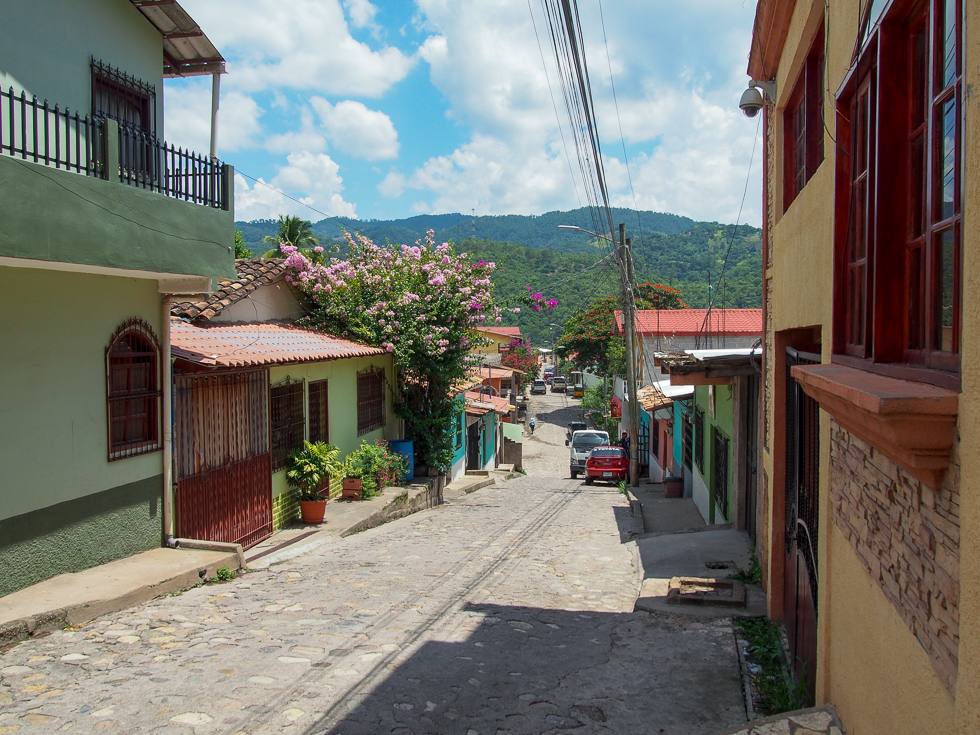
Wander the town of Copán Ruinas and soak up Honduran culture
Allow yourself some time to wander through the town of Copán Ruinas, to get a taste of life in Honduras. The town itself is incredibly beautiful and charming, with cobblestone streets, colorful buildings, and a flower-filled parque central. Simply wandering around the town, people watching, and interacting with locals who you meet along the way is a great way to start to get a sense of what life is like in Copán. And don’t miss the best view in Copán Ruinas – seen from the fort (called ‘el fuerte’ in Spanish), a few minute’s walk uphill from the parque central. It’s also an amazing place to catch a sunset, by the way.
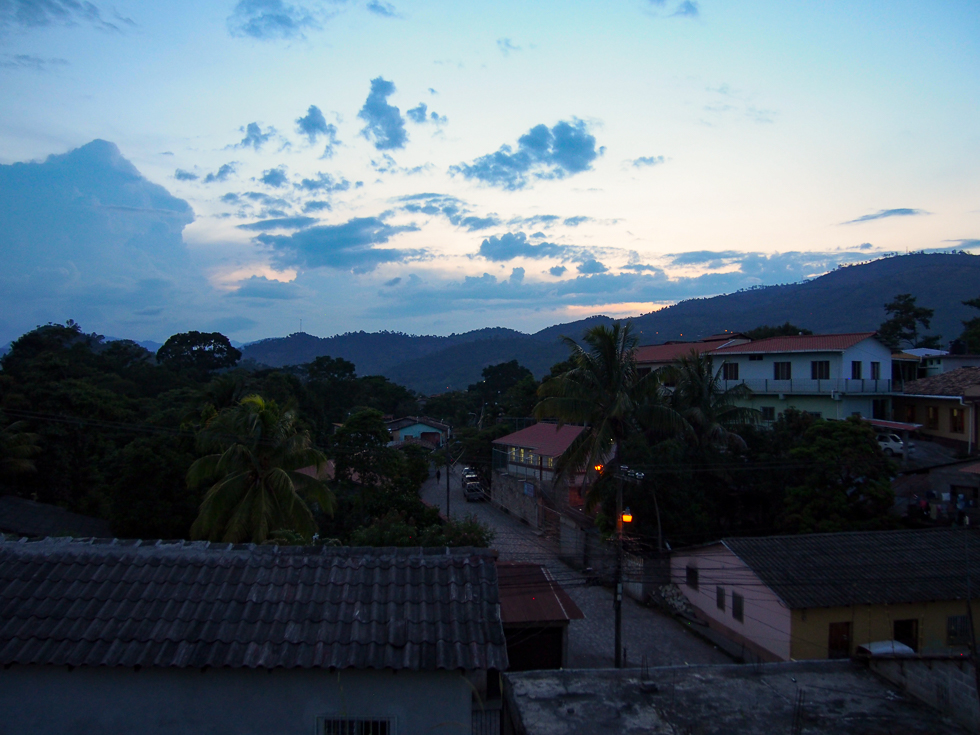
Eat local, Honduran food in Copán Ruinas
One great way to practice sustainable travel is by patronizing local restaurants and establishments and trying local food. Don’t leave Copán before trying baleadas, a staple of Honduran cuisine made from a folded-over flour tortilla, stuffed with beans, cheese, and sometimes eggs, avocado, or possibly meat. I love baleadas so took full advantage of eating them every day that I was in Copán. For baleadas and much more, check out these local restaurants, both Honduran owned:
La llama del bosque: This has to be one of the most iconic restaurants in Copán (and one of the oldest – it’s been around for over 40 years!). It’s owned by a Honduran woman, and the food and the views are amazing. Try to get a seat out on their beautiful terrace, and enjoy being surrounded by greenery as you indulge in some delicious comida catracha.
Tipicos y Pupusas Yaxkukmo: Another beautiful restaurant with delicious food in a serene, plant-filled environment. Tipicos y Pupusas Yaxkukmo (named after Mayan ruler K’inich Yax K’uk’ Mo’, by the way) is Honduran-owned and is conveniently located just south of the parque central, so perfect for a post-meal stroll and people-watching session.
Finally, I didn’t make it to Buena Baleada… but I heard the baleadas there are buenas! Next time I’m in Copán Ruinas…
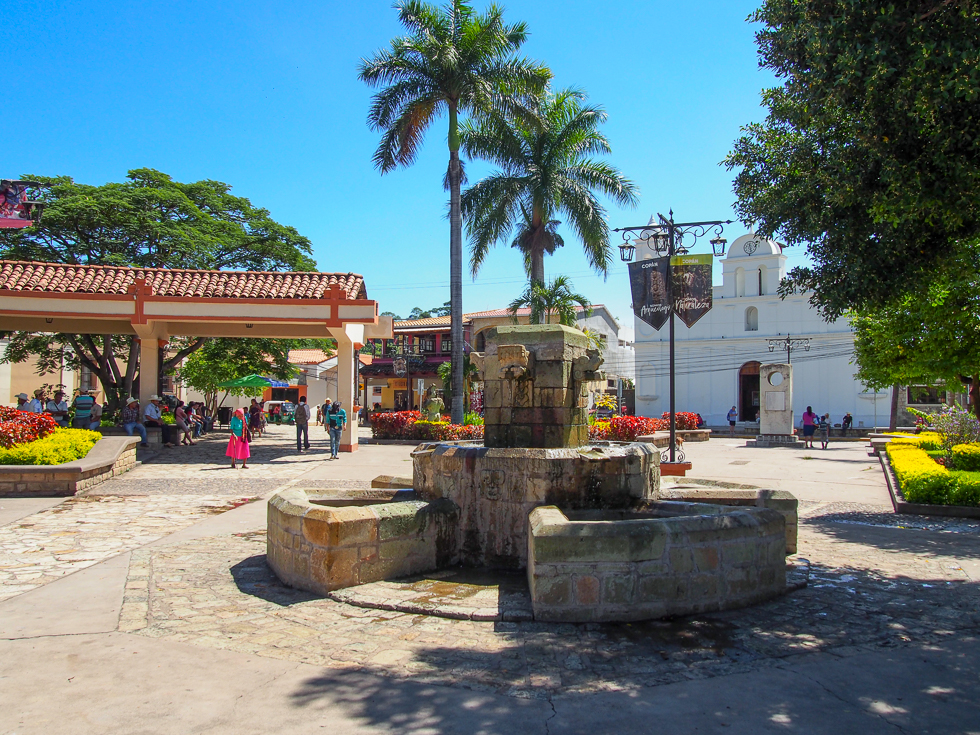
Support Honduran-owned accommodation in Copán Ruinas
While in Copán, make sure to support Honduran-owned businesses by patronizing locally owned accommodation. Especially as accommodation is likely going to be your largest expense while in Copán Ruinas, this is a great opportunity to make sure that your money stays local. I stayed in a lovely and charming hotel called Hotel Cuna Maya, owned and run by a Honduran couple. The hotel was in a great location, just a few minute’s walk from the parque central. I found the owners, Ivan and Enelda, to be incredibly accommodating and helpful, breakfast was included, and the room was very comfortable. I definitely recommend Hotel Cuna Maya.
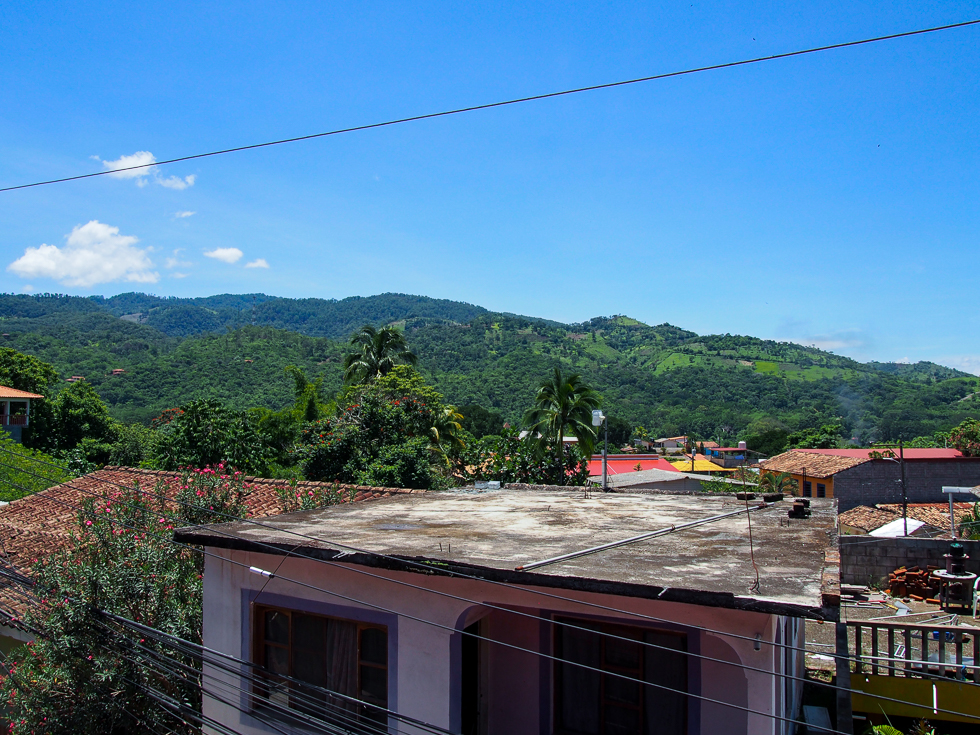
Other information about travel in Copán Ruinas, Honduras
I spent exactly three days in Copán, and I thought it was the perfect amount of time there. Although there is a lot to do in and around the city, Copán Ruinas is quite small. I found it easy to do multiple activities per day, which still having time to rest and relax. I went during the rainy season, which I recommend because it’s the low season for tourism in Copán, thus a great way to help distribute tourism revenue more evenly throughout the year (and help ease any effects of overtourism!). I visited Copán as a solo female traveler and I found it to be a very peaceful experience.
Travelers can get around in Copán Ruinas by walking, taking tuk-tuks (small taxis), and by arranging private shuttles. Note that the town of Copán Ruinas, with its hills, steps, and cobblestones, is not particularly wheelchair-friendly, though I did see wheelchair ramps at the Copán Archeological Park and at Macaw Mountain.
Travelers should note that the water in Copán Ruinas is not safe to drink. To avoid having to buy plastic water bottles, I recommend traveling with a steripen to filter water on the go, which I used with my regular reusable water bottle. Travelers can also consider a water bottle with a built-in filter. For more eco-friendly packing tips, don’t miss my post on zero waste travel.
Finally, I want to say that Copán Ruinas vastly exceeded my expectations, and has definitely gotten the gears turning for future travels in Honduras!
Is Copán Ruinas, Honduras on your bucket list? Do you prefer activities that are more history focused, culturally focused, ecologically focused, or otherwise? What do you think is the most effective way to be an ethical and responsible traveler, in and beyond Copán Ruinas? Do you have any other sustainable travel activities or tips that you would add to this list? Let me know in the comments below!
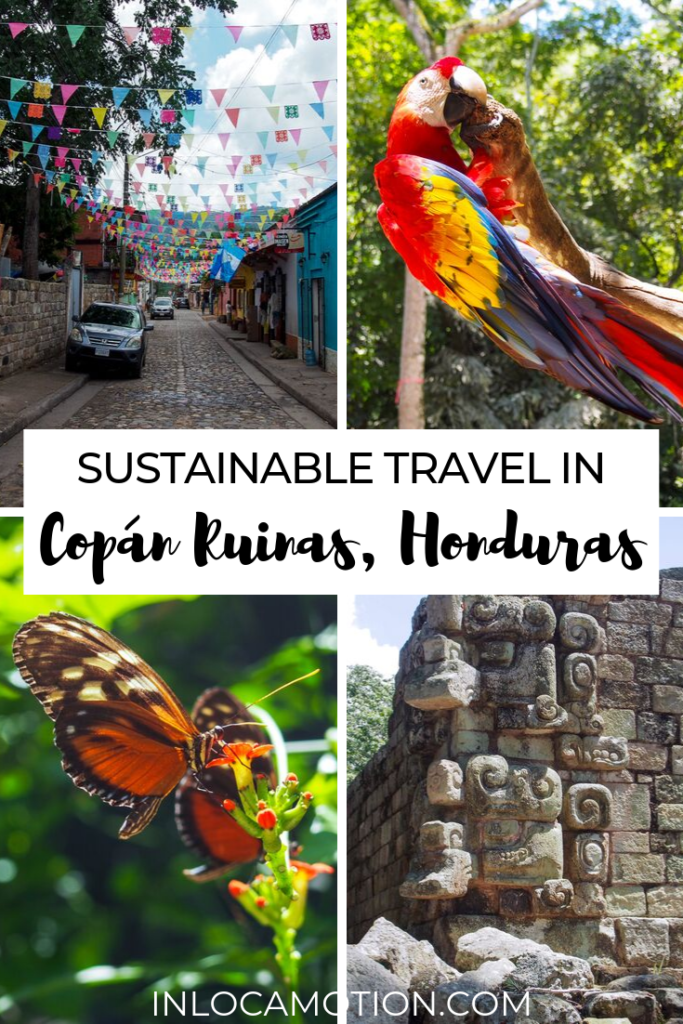









10 comments
I visited Copan on my first-ever backpacking trip as a 20-year-old. My bus broke down on the road there in Guatemala, and I ended up having to hitch across the border and then from the border to town. On the Honduran side, the driver that offered me a lift didn’t have space in his car for my backpack–but a truck driver did. So he offered to take my backpack for me. I thought I’d never see it again, but, sure enough, I made it to the town and my backpack actually beat me there! Such great memories of this cute little village and the ruins nearby.
Aw, thanks for sharing your experience, Carrie! I’m glad that you enjoyed Copan, and that your bag made it there as well! It’s always a great feeling to be surprised by the kindness of strangers. Thanks so much for reading and commenting 🙂
I’m really into sustainable travel and the Mayan ruins and civilisation fascinates me so this is super appealing to me! You must have had a great time learning about reforestation and going to the eco spa. I love how you’re helping the local economy, thank you so much for sharing this!
Thank you for your kind and supportive comment, Pauline! Definitely, if you’re interested in Mayan culture then you will love Copan. The ruins are extremely impressive! Thanks for reading and commenting 🙂
What a beautiful little town! And I love all the sustainable options they’ve got.
Me too! Thanks for reading and commenting, Bliss 🙂
Some great tips here! I love to eat local and share my money with the local economy, but also the tips about water bottles and filters are important. I now travel with a refillable bottle and I have got a filter straw, but still looking at other options too.
Thanks so much, Katie. Yeah, the steripen is a good option for me, somehow using those water bottles with the filter straws doesn’t appeal too much. Either way it’s just great to know that there are these options out there.
I don’t see lots of travel guides on Honduras, and even less that focus on being sustainable! Thank you for sharing a couple of options for those of us trying to be more conscious on our travels!
No problem! Hope it helps 🙂 Thanks for reading and commenting, Kay!